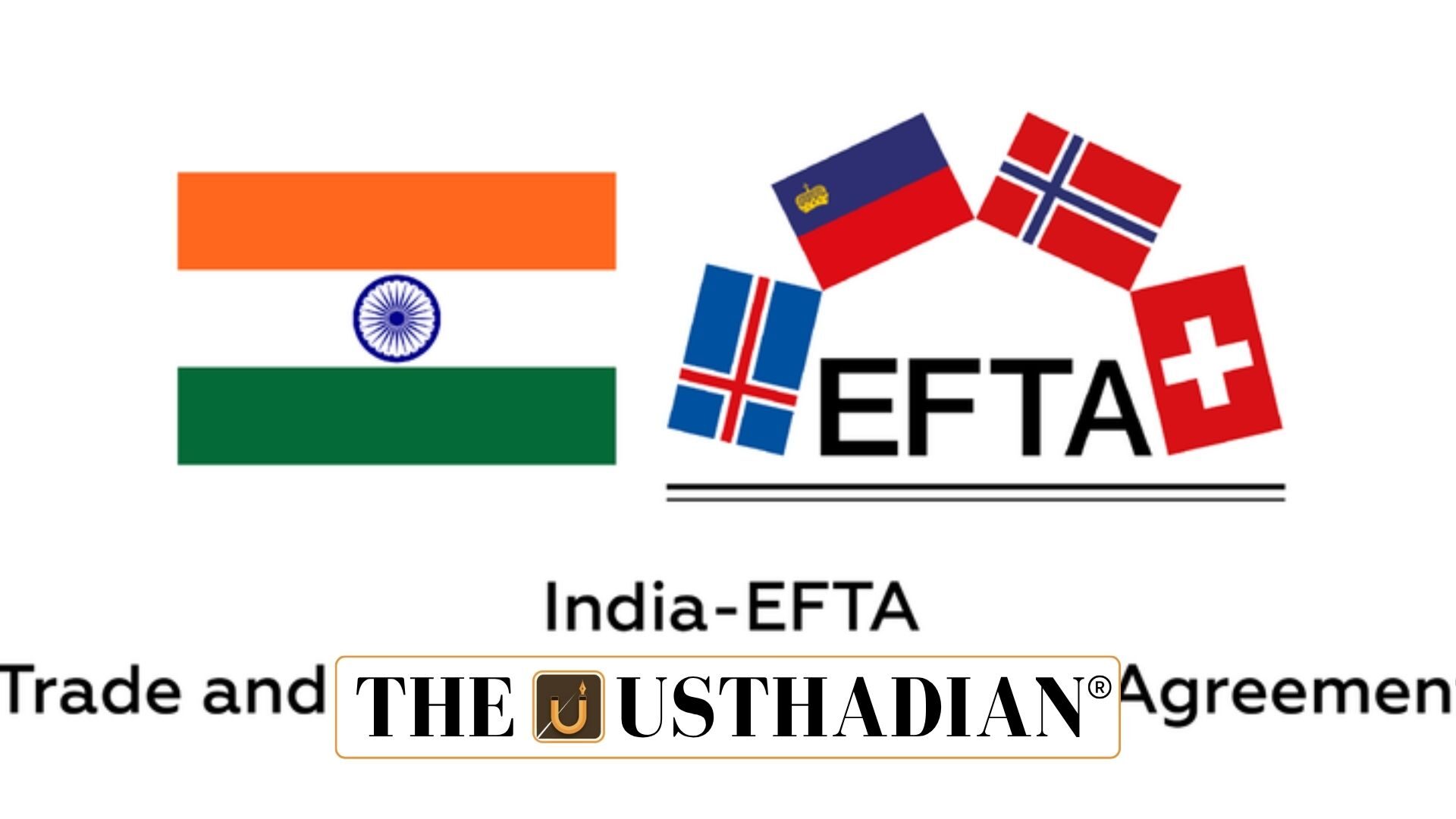Introduction
India EFTA Trade Pact to Boost Investment and Exports: India will operationalize its first Free Trade Agreement with a European bloc on October 1, 2025. The Trade and Economic Partnership Agreement (TEPA) with the European Free Trade Association (EFTA) nations—Switzerland, Norway, Iceland, and Liechtenstein—marks a turning point in India’s trade policy. Announced by Union Minister Piyush Goyal, this pact brings tariff reductions, investment flows, and stronger access to high-value markets.
What is the EFTA India Agreement
The European Free Trade Association (EFTA) is a four-member bloc outside the EU. India signed TEPA with EFTA in March 2024. The agreement ensures phased tariff cuts, improved services market access, protection of intellectual property rights, and facilitation of investments.
Static GK fact: EFTA was established in 1960 by the Stockholm Convention to promote free trade among non-EU European countries.
Key Provisions of TEPA
The deal provides progressive tariff liberalization across goods. Indian exporters of pharmaceuticals, textiles, auto components, gems and jewellery, and chemicals will benefit from lower duties. The pact also includes commitments on technology transfer, skills development, and innovation ecosystems.
A significant feature is the commitment of $100 billion in investments over 15 years, which is expected to generate 1 million jobs.
Strategic Importance for India
This is India’s first FTA with developed European economies, expanding trade beyond Asia and the Middle East. Access to high-income markets diversifies India’s export base.
Sectors such as clean technology, pharmaceuticals, and engineering will see stronger integration into European supply chains. With harmonized standards and smoother logistics, Indian businesses can participate more effectively in global trade networks.
Static GK Tip: Switzerland is India’s largest trading partner in EFTA, contributing more than 90% of bilateral trade.
Opportunities and Challenges
Opportunities
The pact creates avenues for market expansion, R&D collaborations, start-up funding, and green trade practices. India’s start-ups may gain EFTA-backed venture capital for innovation in AI, med-tech, and clean energy.
Challenges
India’s agriculture and dairy sectors remain sensitive. Concerns persist about trade imbalances if Indian exports do not scale quickly. Moreover, awareness among MSMEs and proper implementation of commitments will decide the actual impact.
Link with India’s Trade Vision
The EFTA pact supports India’s goal of becoming a $5 trillion economy. It complements earlier trade deals with UAE and Australia and aligns with ongoing negotiations with the EU, US, and Chile. The FTA also reinforces domestic initiatives such as PLI schemes, GST reforms, and infrastructure upgrades.
Static GK fact: India’s first modern FTA was signed with Sri Lanka in 1998, known as the Indo-Sri Lanka Free Trade Agreement (ISFTA).
Static Usthadian Current Affairs Table
India EFTA Trade Pact to Boost Investment and Exports:
| Topic | Detail |
| Agreement Name | Trade and Economic Partnership Agreement (TEPA) |
| Countries Involved | Switzerland, Norway, Iceland, Liechtenstein |
| Announcement | By Union Minister Piyush Goyal |
| Effective Date | October 1, 2025 |
| Investment Commitment | $100 billion over 15 years |
| Job Creation Estimate | 1 million |
| Key Export Sectors | Pharma, textiles, gems, auto components, chemicals |
| Sensitive Sectors | Agriculture and dairy |
| Signed | March 2024 |
| First FTA with | European developed economies |








